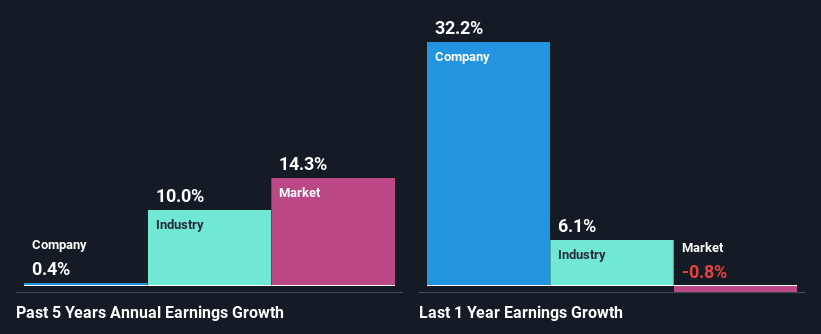Stock Analysis
- South Korea
- /
- Interactive Media and Services
- /
- KOSE:A035420
Are NAVER Corporation's (KRX:035420) Mixed Financials Driving The Negative Sentiment?

NAVER (KRX:035420) has had a rough three months with its share price down 9.5%. We, however decided to study the company's financials to determine if they have got anything to do with the price decline. Long-term fundamentals are usually what drive market outcomes, so it's worth paying close attention. Particularly, we will be paying attention to NAVER's ROE today.
Return on equity or ROE is a key measure used to assess how efficiently a company's management is utilizing the company's capital. Simply put, it is used to assess the profitability of a company in relation to its equity capital.
Check out our latest analysis for NAVER
How Do You Calculate Return On Equity?
The formula for return on equity is:
Return on Equity = Net Profit (from continuing operations) ÷ Shareholders' Equity
So, based on the above formula, the ROE for NAVER is:
4.1% = ₩985b ÷ ₩24t (Based on the trailing twelve months to December 2023).
The 'return' is the profit over the last twelve months. That means that for every ₩1 worth of shareholders' equity, the company generated ₩0.04 in profit.
What Has ROE Got To Do With Earnings Growth?
So far, we've learned that ROE is a measure of a company's profitability. We now need to evaluate how much profit the company reinvests or "retains" for future growth which then gives us an idea about the growth potential of the company. Assuming everything else remains unchanged, the higher the ROE and profit retention, the higher the growth rate of a company compared to companies that don't necessarily bear these characteristics.
NAVER's Earnings Growth And 4.1% ROE
As you can see, NAVER's ROE looks pretty weak. Not just that, even compared to the industry average of 11%, the company's ROE is entirely unremarkable. As a result, NAVER's flat earnings over the past five years doesn't come as a surprise given its lower ROE.
As a next step, we compared NAVER's net income growth with the industry and were disappointed to see that the company's growth is lower than the industry average growth of 10% in the same period.

Earnings growth is an important metric to consider when valuing a stock. What investors need to determine next is if the expected earnings growth, or the lack of it, is already built into the share price. By doing so, they will have an idea if the stock is headed into clear blue waters or if swampy waters await. Is NAVER fairly valued compared to other companies? These 3 valuation measures might help you decide.
Is NAVER Using Its Retained Earnings Effectively?
NAVER's low three-year median payout ratio of 5.7%, (meaning the company retains94% of profits) should mean that the company is retaining most of its earnings and consequently, should see higher growth than it has reported.
Moreover, NAVER has been paying dividends for at least ten years or more suggesting that management must have perceived that the shareholders prefer dividends over earnings growth. Upon studying the latest analysts' consensus data, we found that the company's future payout ratio is expected to rise to 13% over the next three years. Regardless, the future ROE for NAVER is speculated to rise to 6.6% despite the anticipated increase in the payout ratio. There could probably be other factors that could be driving the future growth in the ROE.
Conclusion
Overall, we have mixed feelings about NAVER. While the company does have a high rate of profit retention, its low rate of return is probably hampering its earnings growth. With that said, the latest industry analyst forecasts reveal that the company's earnings are expected to accelerate. To know more about the company's future earnings growth forecasts take a look at this free report on analyst forecasts for the company to find out more.
Valuation is complex, but we're helping make it simple.
Find out whether NAVER is potentially over or undervalued by checking out our comprehensive analysis, which includes fair value estimates, risks and warnings, dividends, insider transactions and financial health.
View the Free AnalysisHave feedback on this article? Concerned about the content? Get in touch with us directly. Alternatively, email editorial-team (at) simplywallst.com.
This article by Simply Wall St is general in nature. We provide commentary based on historical data and analyst forecasts only using an unbiased methodology and our articles are not intended to be financial advice. It does not constitute a recommendation to buy or sell any stock, and does not take account of your objectives, or your financial situation. We aim to bring you long-term focused analysis driven by fundamental data. Note that our analysis may not factor in the latest price-sensitive company announcements or qualitative material. Simply Wall St has no position in any stocks mentioned.
About KOSE:A035420
NAVER
Provides internet and online search portal, and mobile messenger platform services in South Korea, Japan, and internationally.
Flawless balance sheet and undervalued.


